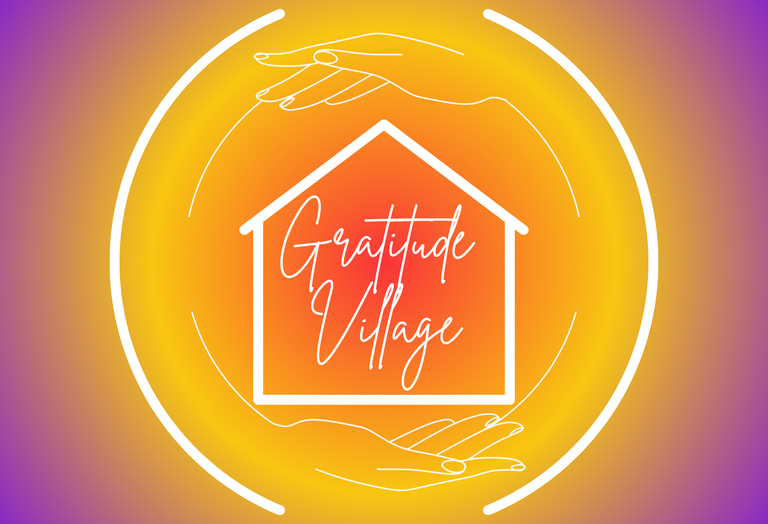Happy Holidays from Everyone at Gratitude Village!
Benefits of Cohousing for Children and Teens: Growing Up Connected
In today’s world, where busy schedules and digital distractions often dominate, it can be challenging for children and teens to experience the deep sense of community that previous generations may have enjoyed. Many parents worry about the increasing isolation of children, the decline of neighborhood connections, and the lack of safe, supportive environments for their kids to thrive. For many families, cohousing provides a rich environment where children and teens can flourish in ways that traditional neighborhoods might not offer.
Gratitude Village
12/28/20245 min read


The Benefits for Children and Teens Living in a Cohousing Community: Growing Up in Connected Living
In today’s world, where busy schedules and digital distractions often dominate, it can be challenging for children and teens to experience the deep sense of community that previous generations may have enjoyed. Many parents worry about the increasing isolation of children, the decline of neighborhood connections, and the lack of safe, supportive environments for their kids to thrive. Enter cohousing—an intentional living model designed around shared spaces, cooperation, and close-knit relationships. For families, cohousing provides a rich environment where children and teens can flourish in ways that traditional neighborhoods might not offer.
What Is Cohousing?
Cohousing is a form of intentional community where private homes surround shared common spaces, such as gardens, playgrounds, kitchens, and community rooms. Families in a cohousing community have their own individual homes but come together for meals, activities, and decision-making. The layout of cohousing encourages interactions between neighbors, fostering a village-like environment where everyone plays a role in creating a strong, interconnected community. For children and teens, this means growing up in an environment that provides a built-in support system, a sense of safety, and a rich social fabric where they can explore their world in a meaningful way.
A Safe and Supportive Environment for Children
One of the most significant benefits of cohousing for children is the sense of safety and security it offers. In cohousing, adults look out for each other’s children as part of the community dynamic. This creates an environment similar to an extended family, where children feel safe to explore, play, and socialize with other kids in the neighborhood. Parents, knowing their children are surrounded by trusted adults, can feel more at ease, allowing for a greater sense of freedom for the kids to roam and engage with the world around them.
This "eyes-on-the-street" approach means that children have the freedom to play outside, ride their bikes, or explore nature without the constant supervision typically required in traditional neighborhoods. They benefit from a village-like atmosphere where community members look out for one another, creating a safer and more enriching environment than many suburban or urban settings can provide.
Building Social and Emotional Skills Through Community
In cohousing, children have daily opportunities to interact with people of all ages, from their peers to adults and seniors. These regular interactions help develop important social and emotional skills that are often difficult to cultivate in more isolated living arrangements.
Communication and Conflict Resolution: In a community-oriented environment, children learn to communicate more effectively, solve problems collaboratively, and practice conflict resolution. Since cohousing values cooperation and collective decision-making, kids are often involved in group discussions and activities, helping them understand the importance of listening to others, expressing themselves clearly, and finding mutually agreeable solutions.
Empathy and Inclusion: Because cohousing is often multigenerational, children are exposed to diverse perspectives, personalities, and needs. Growing up in this environment fosters a deep sense of empathy and inclusion, as they learn to appreciate and respect the experiences of people at different life stages. For teens, this exposure helps them develop emotional intelligence and strengthens their ability to relate to others, which is key in both personal and future professional settings.
Leadership Opportunities: In cohousing communities, young people are often given opportunities to take on leadership roles, whether through organizing events, volunteering for community projects, or helping care for younger children. These experiences can build confidence, resilience, and a sense of responsibility—qualities that are essential as they navigate their teenage years and prepare for adulthood.
Access to Positive Role Models and Mentorship
One of the unique aspects of cohousing is the intergenerational dynamic, where children are exposed to a wide range of adults who serve as positive role models. In a traditional neighborhood, children may only interact with their immediate family or a small group of peers. In cohousing, they regularly engage with a broader spectrum of community members, from young adults to seniors. This creates a natural mentorship environment, where children can look to different adults for guidance, advice, and support. Whether it’s a neighbor who teaches them how to garden, an elder who shares stories of the past, or a teen who shows them how to play a new sport, these relationships help children develop a richer understanding of the world and build skills outside of their immediate family unit. For teens, having access to a broader network of trusted adults can be particularly beneficial. During a time when they may struggle with identity, independence, and relationships, the ability to seek advice from multiple sources gives them a stronger foundation to navigate these challenges.
A Built-In Social Network and Opportunities for Play
One of the hallmarks of cohousing is the emphasis on shared spaces and communal activities. For children and teens, this means having easy access to playmates and social opportunities just outside their door. Whether it’s a communal playground, a shared basketball court or simply open green spaces, children in cohousing communities have constant opportunities for outdoor play and interaction with other kids.
In today’s world, where organized activities and screen time often replace free play, cohousing provides an antidote. The communal spaces encourage spontaneous interactions, creative play, and physical activity—things that are crucial for healthy development. Additionally, children and teens learn how to navigate group dynamics, share resources, and include others in play, all of which help them build social skills.
For teens, the sense of connection extends to having a built-in social network of peers they see daily. This can reduce feelings of isolation, foster friendships, and provide a support system during a time when social belonging is particularly important. Community events like movie nights, potlucks, and holiday celebrations also provide structured opportunities for teens to socialize in a positive, supportive environment and some common houses have created a teen-friendly space for young people to hang out.
Learning Responsibility and Sustainability
Many cohousing communities are focused on sustainability and environmentally friendly living. Children growing up in these environments are often involved in community gardens, composting programs, and sustainable practices from an early age. They learn the importance of taking care of the environment and living responsibly through firsthand experience. In addition, because community living requires collaboration and participation, children in cohousing grow up with a strong sense of responsibility. Whether it’s helping with shared chores, maintaining the community garden, or assisting with community meals, children and teens learn the value of contributing to something larger than themselves.
Conclusion: A Rich Environment for Childhood and Adolescence
Cohousing provides children and teens with a unique, nurturing environment where they can grow up with a deep sense of community, security, and belonging. The intergenerational connections, shared responsibilities, and opportunities for social interaction help foster well-rounded, emotionally intelligent individuals. Whether through learning conflict resolution, practicing leadership, or simply enjoying the freedom of safe outdoor play, children and teens in cohousing are given the tools to thrive not just academically, but socially and emotionally as well.
As families continue to seek out more connected, intentional living arrangements, cohousing stands out as a solution that offers both community and independence—providing a balanced environment where children and teens can develop into well-rounded individuals with strong roots in both family and community.
COMMUNITY
Join us in embracing nature, diversity and connection.
Sustainability
DIVERSITY
info@gratitudevillageco.com
720-689-4821
© 2025. All rights reserved.
AFFORDABILITY
Gratitude Village Inc. is a 501(c)3 charitable corporation that values diversity, equity, and inclusion as essential to our mission
Subscribe to our Substack
Refund Policy




Gratitude Village is a Proud Member of these organizations
